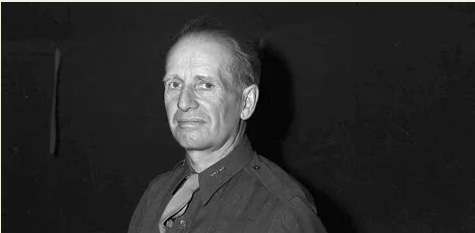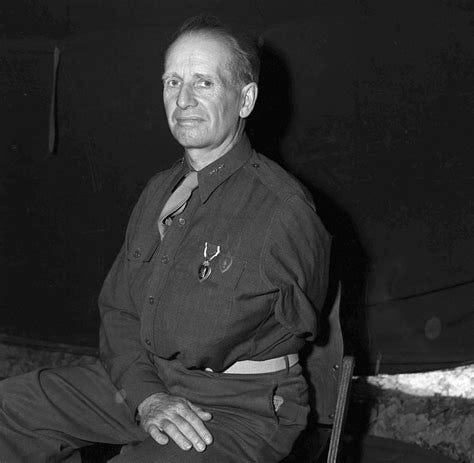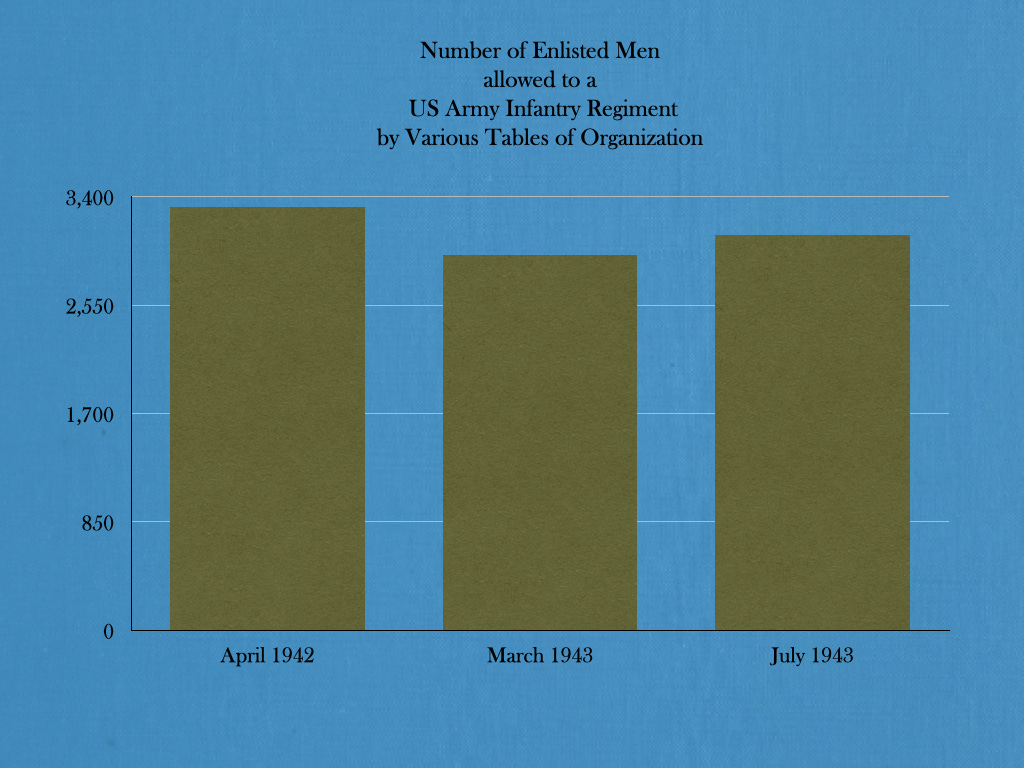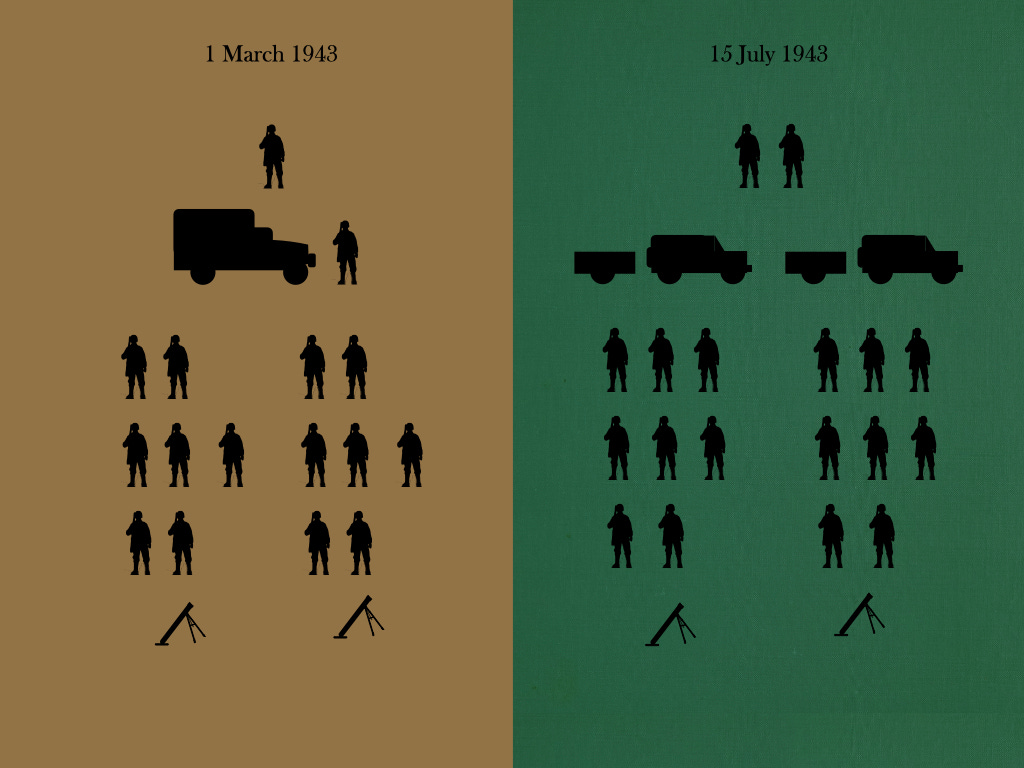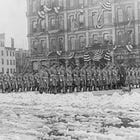The Revolt of the Generals (July 1943)
Battalion: An Organizational Study of United States Infantry
Welcome to the Tactical Notebook, where you will find five hundred tales of armies that are, armies that were, and armies that might have been. If you like what you see here, please share this the Tactical Notebook with your friends.
The estate of the late John Sayen has graciously given permission to the Tactical Notebook to serialize his study of the organizational evolution of American infantry battalions. The author’s preface, as well as some previously posted parts of this book, may be found below, in the section marked “For Further Reading.”
The tables of organization of 1 March 1943 met much resistance. While none of the senior officers who took exception to the new establishments deprecated the goal of saving space on ships, each took umbrage at specific sets of redactions, reductions, and replacements.
The discussions that followed these complaints bore fruit in the form of a new set of tables of organization. Dated 15 July 1943, these revised establishments returned 159 men to each infantry regiment. They also restored many of the 2.5-ton trucks and jeeps that had previously been replaced by 1.5-ton trucks.
The only change that the tables of organization of 15 July 1943 made to the rifle company was the replacement of the single motor vehicle of that unit, the 1.5-ton truck of the weapons platoon, with two jeeps. This change added a second driver to the weapons platoon, turning the 192-man (all ranks) rifle company of 1 March 1943 into the 193-man rifle company of 15 July 1943.
The weapons company also gained a single soldier, thereby increasing its strength in enlisted men from 157 to 158. At the same time, it gained two officers, each of whom was given charge of one of the two mortar sections. (The non-commissioned officer who had previously led each mortar section became the section chief.)
The weapons company also exchanged each of its 1.5-ton weapons carriers for a pair of trailer-pulling jeeps. However, rather than adding additional drivers, the new table of organization for the weapons company made the driving of jeeps an additional duty for selected mortar men and machine gunners. Thus, rather than gaining three drivers, the mortar platoon of the weapons company lost three men who had been exclusively concerned with the operation and care of motor vehicles. Similarly, each of the two machine gun platoons suffered a net loss of two drivers.
The economies achieved by the “double-hatting” of drivers made possible the assignment of an additional cook to the company headquarters and the provision of six ammunition carriers to the mortar platoon. Thus, the only “uncompensated” addition to the weapons company was the transportation sergeant of the company headquarters, a non-commissioned officer who supervised the work of the transportation corporals of the mortar and machine gun platoons.
The tables of organization of 15 July 1943 restored 14 enlisted men to the headquarters company of the infantry battalion. Of these, 2 (a telephone lineman and a radio repairman) went to the communications platoon and 12 (all of whom were anti-tank gunners) to the antitank platoon. As might be expected, the policy of replacing full-time drivers with men of other specialities who also drove vehicles increased the number of men in the headquarters who had been trained as communications, antitank, supply, administrative, and food service specialists.
The net increase in the personnel strength of the antitank platoon resulted from the replacement of the 37mm antitank gun with the 57mm antitank gun. As the latter was a heavier weapon that fired heavier projectiles, it required both a larger crew and a bigger prime mover. Because of this, the antitank platoon replaced six of its jeeps with three 1.5-ton trucks.
The same changes took place in the antitank platoons of the regimental antitank company, adding 36 antitank gunners to the authorized strength of that unit. In addition to this, the mine platoon that previously had fallen prey to McNair’s red pencil returned, thereby increasing the number of enlisted men in the antitank company by 30. As might be expected, the double-hatting of drivers offset some of this increase. Thus, rather than increasing by 66 men, the antitank company grew by 48.
The tables of organization of 15 July 1943 added a pair of gunners to each howitzer squad and a radio operator to each cannon platoon. At the same time, it transferred the three cannon platoons of the regimental headquarters company to a revived canon company. This created the need for a company headquarters, which tipped the scales at 2 officers and 29 men.
The service company traded its 1.5-ton trucks for a somewhat smaller number of 2.5-ton trucks. While this change saved on drivers, it increased the requirement for mechanics.
Sources:
Ken Roberts Greenfield, Robert R. Palmer and Bell I. Wiley The Organization of Ground Combat Troops (Washington: Center of Military History, 1987)
Table of Organization T/O 7-11 Infantry Regiment (15 July 1943)
Table of Organization 7-12 Headquarters and Headquarters Company (15 July 1943)
Table of Organization 7-13 Service Company (15 July 1943)
Table of Organization 7-14 Antitank Company (15 July 1943)
Table of Organization 7-15 Infantry Battalion (15 July 1943)
Table of Organization 7-16 Headquarters and Headquarters Company, Infantry Battalion (15 July 1943)
Table of Organization 7-17 Rifle Company, Infantry Battalion (15 July 1943)
Table of Organization 7-18 Heavy Weapons Company, Infantry Battalion (15 July 1943)
For Further Reading:


